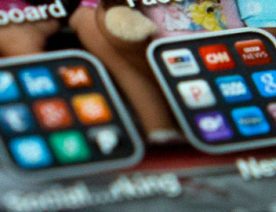
March 7, 2023
As the economics of journalism continue to evolve, a defining question about the future is whether the news media can create content that consumers are willing to pay for or donate to directly.
Central to answering that question is understanding the behavior of what many publishers call the next generation of news audiences, those Americans that many legacy news organizations have found elusive: Millennials and Gen Z. Funding news examines in detail who among these audiences pay for or donate to news, how these payers or donors get news, and what topics or interests drive that behavior. This report, based on a representative sample of nearly 6,000 news consumers 16 to 40 years old, is part of a series of studies of these audiences conducted by the Media Insight Project, a collaboration of The Associated Press-NORC Center for Public Affairs Research and the American Press Institute. The new findings expand on paying or donating behavior we touched on only briefly in two prior releases, the first on major news attitudes among Millennials and Gen Z and a second on the topics these diverse generations most often follow.
Overall, the analysis finds that 60% of people younger than 40 already pay for or donate to news in some way. And people who pay for or donate to news comprised a majority in every age category we evaluated — it is not only most older Millennials or their younger Millennial counterparts who pay for or donate to news, but also Gen Z. The older they are, however, the more likely they are to pay or donate.
In all, 51% of Gen Z (16- to 24-year-olds) pay for or donate to news, and that number rises to 63% among younger Millennials (25- to 31-year-olds) and to 67% among older Millennials (32- to 40-year-olds). The numbers suggest a real potential for sustainable revenue — if news organizations, whether legacy or start-up, can create content Millennials and Gen Zers find valuable.
The study defines those who pay for or donate to news as those who report either personally paying for or donating to either print or digital magazines, print or digital newspapers, digital news apps, nonprofit news sites, email newsletters from independent creators, video or audio content from independent creators or influencers through YouTube or podcasts, public radio, or TV.
AMONG THE STUDY’S KEY FINDINGS:
- Overall, news payers or donors younger than 40 skew older. Among 16- to 40-year-olds who pay for or donate to news, 42% are older Millennials, 29% are younger Millennials, and another 29% are Gen Z. Yet, it is important to note that paying for or donating to news is not uncommon even among this youngest generation of news consumers. About half (51%) of Gen Z pay for or donate to some type of news content or source.
- New media formats have special appeal to people younger than 40. Americans ages 16 to 40 are more than twice as likely to pay for or donate to email newsletters, video, or audio content from independent creators (47%) than to traditional sources like print or digital newspapers (22%).
- A majority of Gen Z and Millennials, regardless of race or ethnicity, pay for or donate to some type of news. However, Black (68%) and Hispanic (63%) Americans are slightly more likely than white Gen Z and Millennials (57%) to pay for or donate to news. Sixty percent of Asian Americans pay for or donate to news sources.
- News payers or donors share some common behavioral characteristics. In general, Americans ages 16 to 40 who pay for or donate to news spend a great deal of time online, are more likely to actively seek out news, and use traditional and social media sources to get news daily than those who do not pay for or donate to news. For example, 31% of those who pay for or donate to news text with family or friends about the news they consume daily compared to 13% of those who do not pay for or donate to news.
- Yet despite being more active, the majority of Gen Z and Millennials who pay for or donate to news “bump” into news more than seek it out. It’s true that these news payers or donors are also more likely to actively seek out news (45%) than Americans ages 16 to 40 overall (38%). (In contrast, 71% of those who do not pay for or donate to news mostly bump into news and information or hear about it from others.) But that still leaves the majority of Gen Z and Millennial payers or donors as “bumpers” (54%) rather than “seekers” (45%).
- News payers or donors use a variety of social media sources to get news. Gen Z and Millennials who pay for or donate to news use, on average, two social media sources at least daily to get news and information, while those who do not pay for or donate use only one. Further, payers and donors are more likely than those who do not pay for or donate to use platforms such as Facebook (45% vs. 33%), YouTube (45% vs. 27%), or Twitter (30% vs. 13%).
- Payers or donors are just as likely to feel worn out by the news as those who don’t pay for or donate to news content. Gen Z and Millennials who pay for or donate to news are just as likely as those who do not pay for or donate to news and Americans ages 16 to 40 overall to report feeling worse the longer they stay online and connected (31%, 28%, and 30%, respectively).
The survey, conducted from May 18 through June 8, 2022, examined the attitudes of 5,975 Americans ages 16 to 40. Data were collected using both probability and non-probability sample sources. The overall margin of sampling error for the combined sample is +/- 1.7 percentage points at the 95 percent confidence level, including the design effect.








